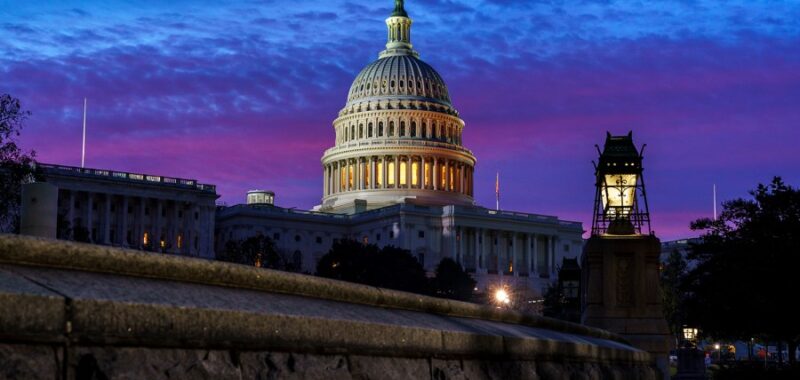
A Future Caucus report released Thursday found an increase in congressional candidates under the age of 45 seeking higher office, with the group’s leader noting younger blocs have found success combatting political polarization.
“As more and more people are louder about the problems in our democracy, it would be rational, it would be reasonable, to see more and more people decide they aren’t going to get involved,” Layla Zaidane, president and CEO of Future Caucus, told The Hill. “Instead, we’re seeing the opposite. We’re seeing more and more young people decide to throw their hat in the ring and be a part of the solution.”
The Thursday report, titled “On the Rise,” examines demographic data of congressional candidates from primary and general ballots. As of Sept. 11, there are 1,285 congressional candidates on November’s general election ballot, including 21 Gen Z candidates, according to the report. There’s 220 millennials seeking office — a 79 percent increase from 2020, when 123 candidates in the age group ran for Congress.
But candidates over the age of 45 are still outnumbering younger candidates two to one. It found the average age in the House and Senate are 57.9 and 65.3 years old, respectively.
Regardless, the number of millennial candidates running for Congress is growing as Baby Boomers and the Silent Generation age out. One-hundred and ninety-nine millennials, aged 28 to 43 years old, are running for the House while 21 seek Senate seats this election cycle. All 21 Gen Z candidates, aged 18 to 27 years old, are running for the lower chamber of congress.
As Millennials and Gen Z candidates continue to run for office, including at a state level, younger candidates are disproportionately better at transcending political polarization, Zaidane said.
“That could pretend to a culture shift on the horizon as we start to harness that energy that young people are bringing and then apply that to our highest institutions,” she added. “We see them over-performing when it comes to getting bipartisan legislation passed. We see them just more naturally stepping into consensus builder roles.”
Still, these younger candidates are losing, not qualifying for ballots or withdrawing from the race at a higher rate than their Gen X, Baby Boomer and Silent Generation counterparts.
Even though Gen Z contenders only account for 2.9 percent of all candidates, this group has the highest campaign withdrawal rate at 16.7 percent. They had a 33.3 percent losing record in this year’s primaries.
Millennials faced a similar struggle, with the second-highest withdrawal rate (7.5 percent) and the highest loss rate in primaries, runoffs and convention races — rounding out at 41.2 percent.
Even so, younger candidates have found some success in Congress. Rep. Maxwell Frost (D-Fla.) made history in 2022 as the first member of Gen Z to take national office. Future Caucus awarded the representative of Central Florida with their Generational Changemaker Award at the end of 2023.
“What’s great about Congressmen Frost’s background is that he was so rooted in his community before running for office,” Zaidane said. “You see that young people are, contrary to popular belief, not apathetic, not disengaged and checked out. They care.”
Zaidane did point out a “depressing” statistic that remained consistent across generations. Regardless of age, men still dominate the ballot as more than 70 percent of all candidates identify as men. This carries true for millennials and Generation Z candidates, where only 30 and 19 percent identify as women across the two age groups.
Although millennials are mostly running as Democratic candidates, the report found Gen Z candidates have a split-plurality between the Democratic party and third-party or unaffiliated group. In fact, even though Baby Boomers and Gen X candidates lean Republican, no generation is completely dominated by a single party.
Ultimately, Zaidane feels hopeful about the future, hoping that as younger politicians continue seek higher office reports like “On the Rise” help people imagine a “renewed American democracy.”
“We tend to talk about politics today with a sigh,” Zaidane said. “It shouldn’t come with a sigh. It should come with some curiosity and some optimism, and we hope that looking at this report and seeing the growth in the next generation — who’s not running away from the fire, but running towards it — gives us all something to be optimistic about.”

